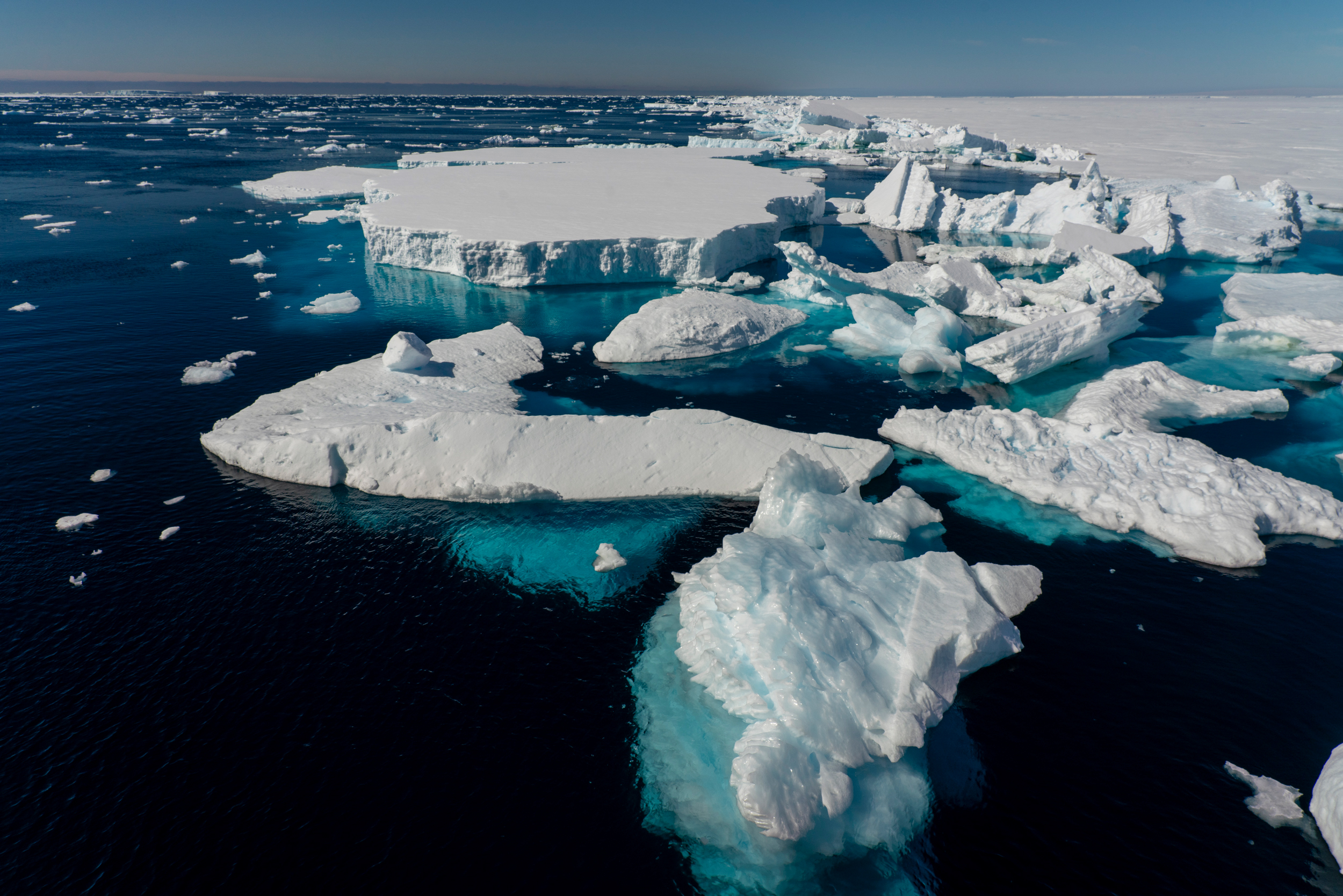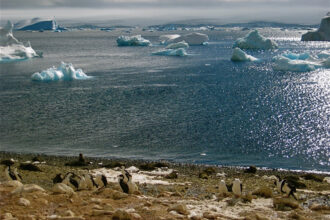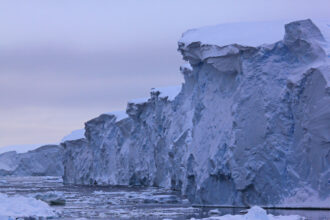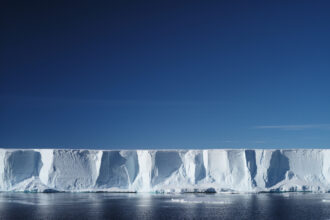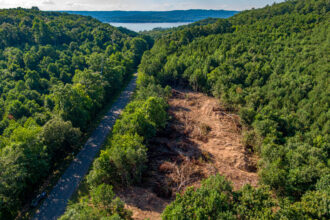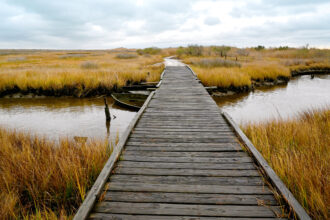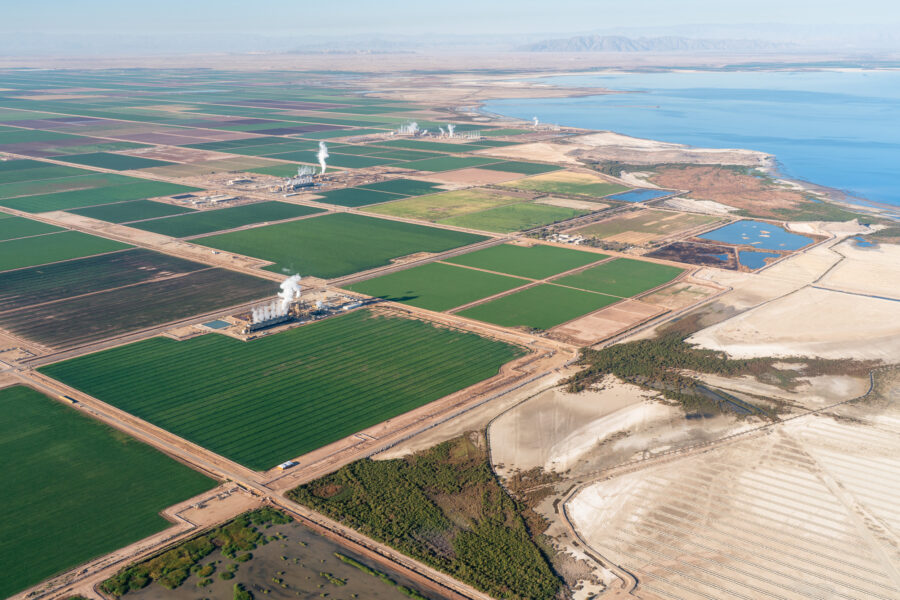A detailed new analysis of NASA satellite images shows there is much more meltwater sitting atop Antarctica’s ice shelves than previously estimated, much of it in huge slush zones that haven’t been carefully mapped until now. The new information will help determine how vulnerable the shelves are to cracking and disintegration, according to an international team of scientists who published their findings in Nature Geoscience this week.
Human-caused climate heating means more meltwater forms on the surface of the ice shelves, which are the floating extensions of Antarctica’s giant glaciers. When ice shelves crumble and collapse, it can speed the flow of the land-based ice to the sea and raise the rate of sea level rise.
Earlier this week, a separate study in the same journal also showed the increasing vulnerability of Antarctica’s ice shelves to melting from below, with the findings suggesting that a warming ocean is likely to lead to “runaway melting.”
But up to now, it’s been difficult to accurately map the slush zones because they are hard to distinguish from surrounding areas, said lead author Rebecca Dell, a glaciologist at Cambridge University’s Scott Polar Research Institute.
“Slush can look like shadows from clouds, or other things, when seen by satellites,” she said. “But using machine learning techniques, we can get a clearer picture of how slush might be affecting ice in Antarctica.”
The idea to map the slush goes back a few years, when Dell was doing her Ph.D. research on ice shelves.
“I started my career studying the ponds, the really obvious meltwater,” she said. “But occasionally I would pick up slush, and it would interfere with what I was trying to map at the time. It was getting in the way, but really inconsistently.”
As she discussed those challenges with other scientists, they realized the slushy areas could be important and decided to try and measure them and calculate their impact.
“It kind of started as an annoyance and then ended up as a big research project,” she said. “Machine learning allows us to use more information from the satellite, since it can work with more wavelengths of light than the human eye can see. This allows us to determine what is and isn’t slush, and then we can train the machine learning model to quickly identify it across the whole continent.”
“This slush has never been mapped on a large scale across all of Antarctica’s large ice shelves, so over half of all surface meltwater has been ignored until now,” she said. “This is potentially significant for the hydrofracture process, where the weight of meltwater can create or enlarge fractures in the ice.”
A Warning Sign?
Scientists have known for a while that meltwater on the surface of the ice shelves can affect their stability.
“That was shown in 2002, when the Larsen B ice shelf, which was covered in lakes formed from melting ice, collapsed dramatically, losing an area of ice the size of Rhode Island in a matter of weeks,” said Sammie Buzzard, an assistant professor at the Centre for Polar Observation and Modelling at Northumbria University in the United Kingdom, who was not involved in the new study.
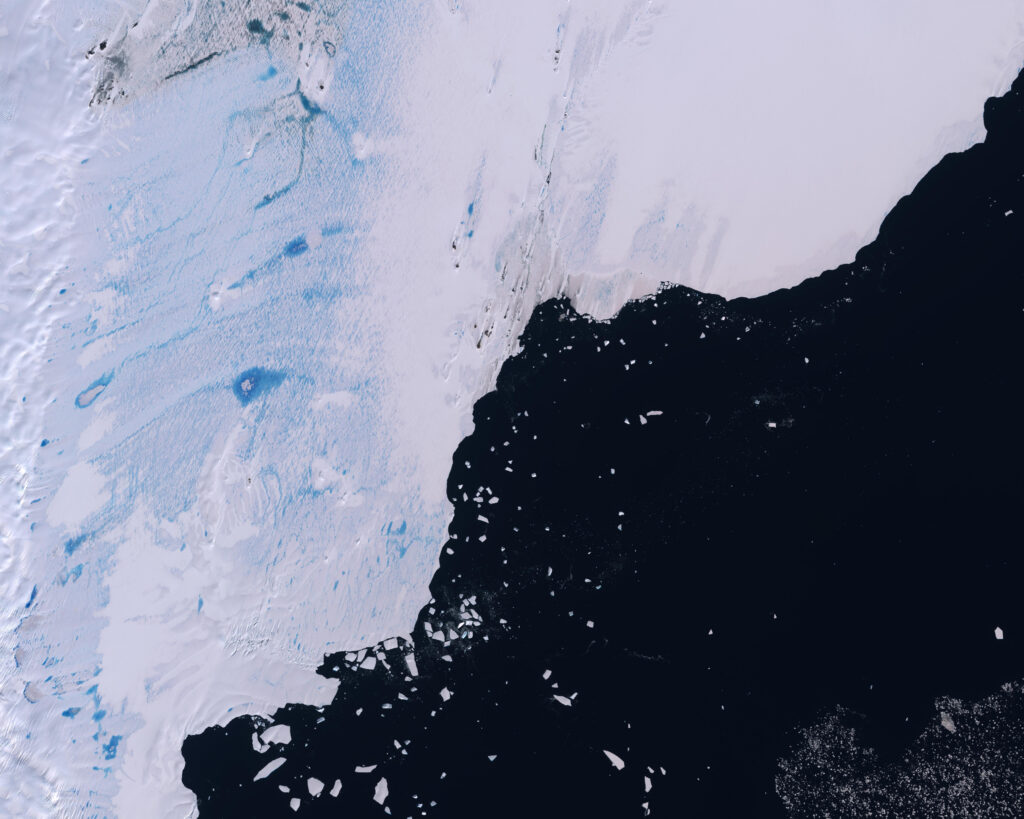
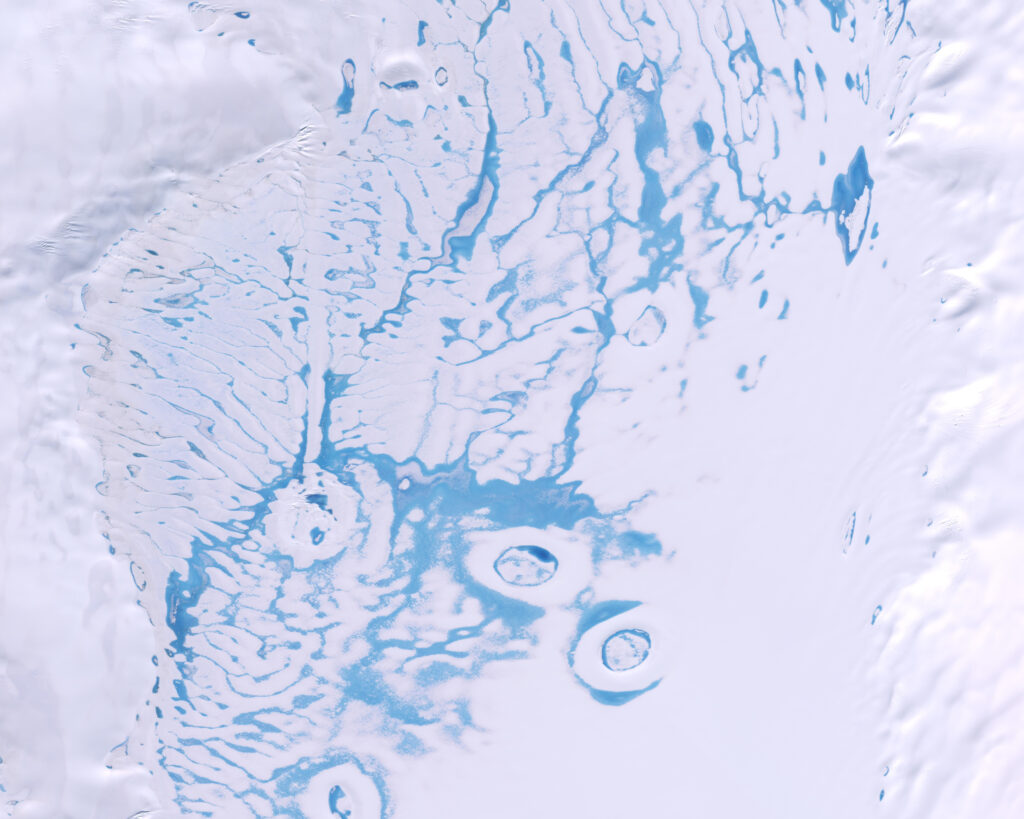
A study published this week used artificial intelligence to tease out subtle color variations and map previously unidentified areas of slush on Antarctic ice shelves that contain much more meltwater than previously estimated. The new information will help climate models make more accurate projections about how global warming will affect the ice shelves in the future. Credit: Copernicus Sentinel data, processed by Rebecca Dell
The collapse of Larsen B, located along the Antarctic Peninsula, stunned ice scientists and helped reinforce that global warming is likely to trigger more such events. Subsequent research suggested that another .5 degree Celsius increase of Earth’s average temperature could push Antarctic ice shelves past the point of no return.
The new research suggests there may be more water on the surface of ice shelves than previously thought from studies that just looked at lakes, she said.
“This is important for scientists like myself who create computer simulations of where Antarctica is melting, and how that might change in the future,” she said. “This has implications for sea level rise, as Antarctica’s ice shelves act to hold back, or buttress the Antarctic ice sheets. If ice shelves collapse, we are in danger of increased sea level change.”
The newly mapped slush has other implications for the future of the ice shelves, Dell added. Since slush and lakes are less white than snow or ice, they absorb more heat from the sun, causing more snowmelt. This extra melt is currently unaccounted for in climate models, which may lead to underestimates in projections of ice sheet melting and ice shelf stability.
The new research calculates that slush and pooled meltwater leads to 2.8 times more meltwater formation than predicted by standard climate models, which means those models might also be underestimating the vulnerability of the ice shelves.
“For us, that was a really key finding,” she said. “It’s something that should be included in future climate models, because if we’re underestimating the melt at the peak of the melt season, it’s going to have big ramifications. I was surprised that this meltwater was so poorly accounted for in climate models. Our job as scientists is to reduce uncertainty, so we always want to improve our models so they are as accurate as possible.”
This story is funded by readers like you.
Our nonprofit newsroom provides award-winning climate coverage free of charge and advertising. We rely on donations from readers like you to keep going. Please donate now to support our work.
Donate NowDell said some researchers are now also starting to look at meltwater on the surface of the land-based ice sheets and glaciers, in addition to the floating ice shelves.
“A term that’s being thrown around a lot at the moment is the Greenland-ification of Antarctica,” she said. “In Greenland, we see a lot more meltwater over the ice sheets, and we know that when that drains to the bed, it can change the flow speeds of the Greenland ice sheet as it flows toward the sea.”
Right now, she said the land-based ice sheets in Antarctica are not melting that much compared to the floating ice shelves, or compared to Greenland, but that is likely to change with more warming.
“The next job for scientists,” she said, “would be to start to look at meltwater and to work out if it will have an impact like it does in Greenland.”
About This Story
Perhaps you noticed: This story, like all the news we publish, is free to read. That’s because Inside Climate News is a 501c3 nonprofit organization. We do not charge a subscription fee, lock our news behind a paywall, or clutter our website with ads. We make our news on climate and the environment freely available to you and anyone who wants it.
That’s not all. We also share our news for free with scores of other media organizations around the country. Many of them can’t afford to do environmental journalism of their own. We’ve built bureaus from coast to coast to report local stories, collaborate with local newsrooms and co-publish articles so that this vital work is shared as widely as possible.
Two of us launched ICN in 2007. Six years later we earned a Pulitzer Prize for National Reporting, and now we run the oldest and largest dedicated climate newsroom in the nation. We tell the story in all its complexity. We hold polluters accountable. We expose environmental injustice. We debunk misinformation. We scrutinize solutions and inspire action.
Donations from readers like you fund every aspect of what we do. If you don’t already, will you support our ongoing work, our reporting on the biggest crisis facing our planet, and help us reach even more readers in more places?
Please take a moment to make a tax-deductible donation. Every one of them makes a difference.
Thank you,

